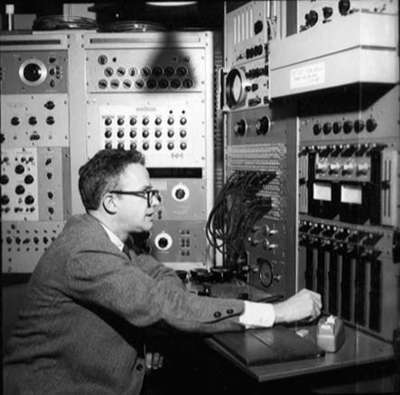Lejaren A. Hiller programmed the “Illiac Suite” in 1957 on the ILLIAC computer at the University of Illinois, Champaign, and composed the well-known “Computer Cantata” with Robert A. Baker in 1963.
373
He was an experimental composer in the strictest sense. In the mid sixties, Hiller asserted that his, “objective in composing music by means of computer programming is not the immediate realization of an aesthetic unity, but the providing and evaluating of techniques whereby this goal can eventually be realized.” In this sense Hiller was a forward looking composer, in that each piece was an experiment that lead towards the next piece.
He first studied composition with Harvey Officer and oboe with Joseph Marx. Despite his interest in music, he initially decided to enter the field of chemistry.
From 1947 to 1952 Hiller worked as a research chemist for DuPont in Waynesboro, Virginia where he also ran a small concert series, and continued to write music despite the fact that none of his music had been performed.
Hiller’s musical thinking was greatly influenced by information theory. He wrote a number of articles on information theory, and its relationship to music and computer music. In one article he analyzed four sonata expositions by different composers (Mozart, Beethoven, Berg and Hindemith). In this same Technical Report he also presented an analysis that he did with Ramon Fuller of the first movement of Webern’s Symphony. Hiller thought of fluxes in the amount of information related by a piece to be the essential dramatic nature of music.
Several of the commands available in the computer composition language MUSICOMP, which was written by Hiller and Robert A. Baker in order to create their Computer Cantata, are designed with ideas of information fluxes in mind. Also the first movement of Hiller’s Algorithms I is entitled, “The Decay of Information,” as an indication of how it was composed.^

